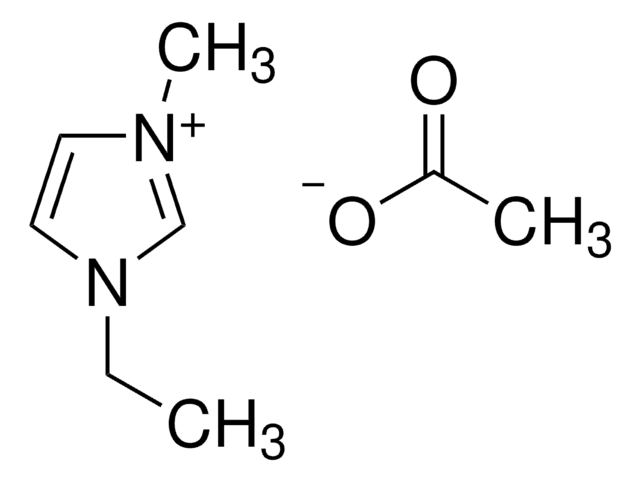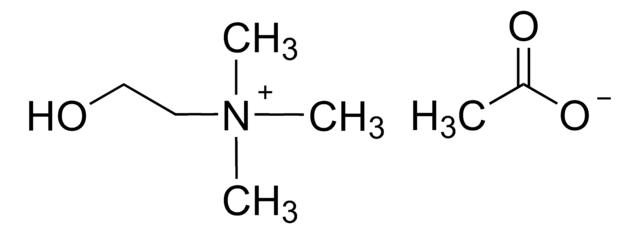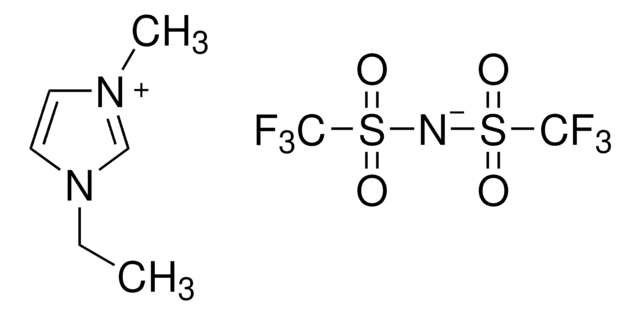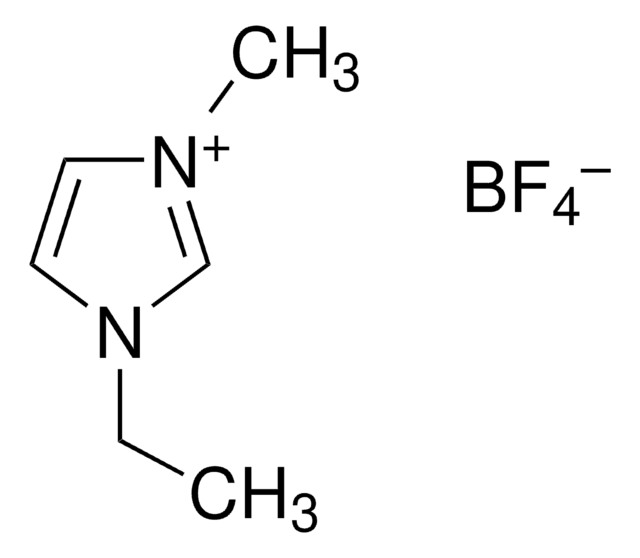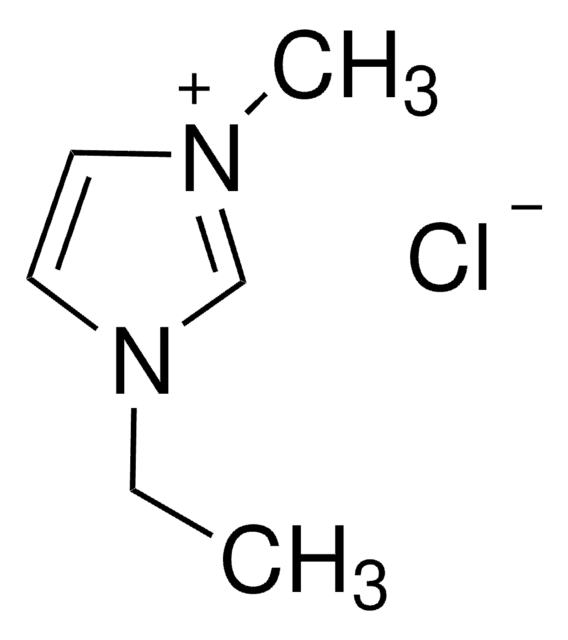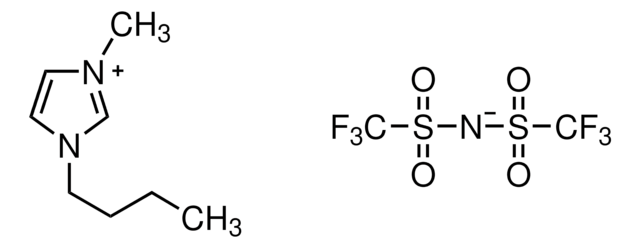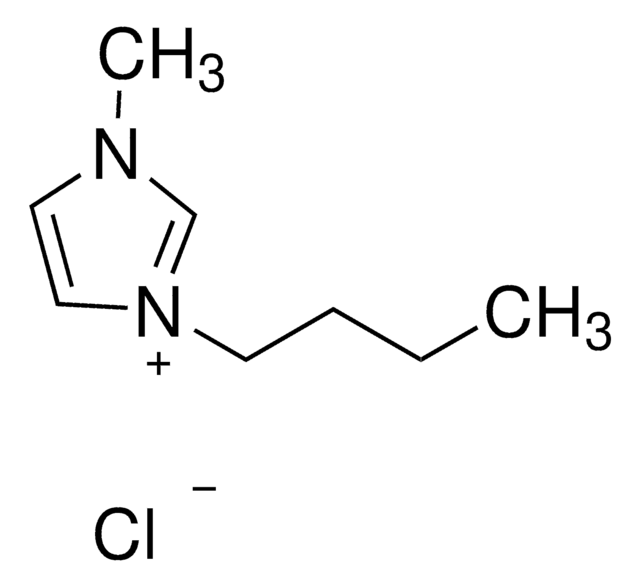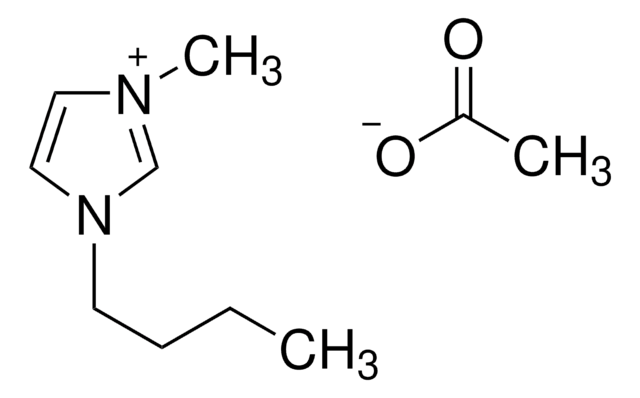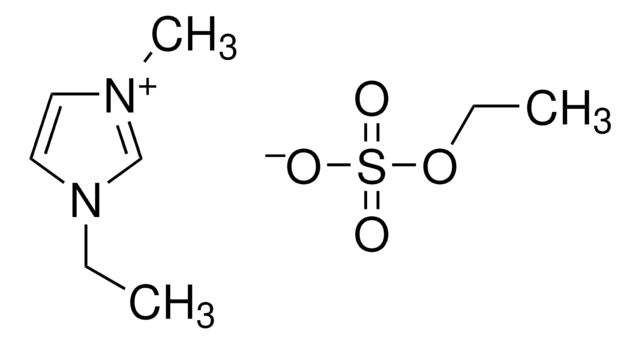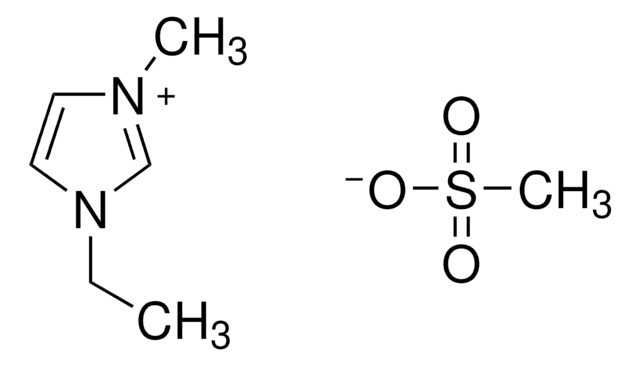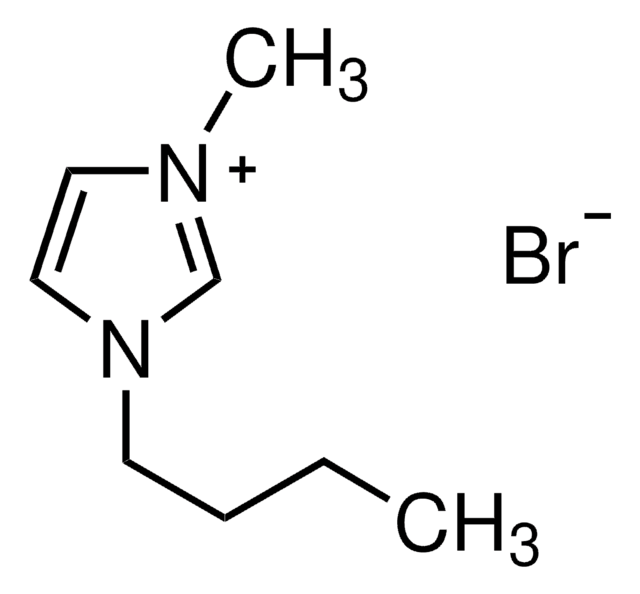Kluczowe dokumenty
900787
1-Ethyl-3-methylimidazolium acetate
≥98%
Synonim(y):
1-Methyl-3-ethylimidazolium acetate, 3-Ethyl-1-methylimidazolium acetate, EMIM Ac
About This Item
Polecane produkty
Poziom jakości
Próba
≥98%
Formularz
liquid
charakterystyka ekologicznej alternatywy
Catalysis
Design for Degradation
Learn more about the Principles of Green Chemistry.
sustainability
Greener Alternative Product
zanieczyszczenia
≤0.5% H2O
mp
>30 °C (product can occur as an undercooled melt)
gęstość
1.101 g/cm3 at 20 °C
Zastosowanie
battery manufacturing
kategoria ekologicznej alternatywy
ciąg SMILES
CC([O-])=O.CCn1cc[n+](C)c1
InChI
1S/C6H11N2.C2H4O2/c1-3-8-5-4-7(2)6-8;1-2(3)4/h4-6H,3H2,1-2H3;1H3,(H,3,4)/q+1;/p-1
Klucz InChI
XIYUIMLQTKODPS-UHFFFAOYSA-M
Szukasz podobnych produktów? Odwiedź Przewodnik dotyczący porównywania produktów
Opis ogólny
Zastosowanie
produkt powiązany
Hasło ostrzegawcze
Warning
Zwroty wskazujące rodzaj zagrożenia
Zwroty wskazujące środki ostrożności
Klasyfikacja zagrożeń
Acute Tox. 4 Oral - Skin Irrit. 2 - Skin Sens. 1B
Kod klasy składowania
10 - Combustible liquids
Klasa zagrożenia wodnego (WGK)
WGK 3
Temperatura zapłonu (°F)
327.2 °F - closed cup
Temperatura zapłonu (°C)
164 °C - closed cup
Wybierz jedną z najnowszych wersji:
Certyfikaty analizy (CoA)
Nie widzisz odpowiedniej wersji?
Jeśli potrzebujesz konkretnej wersji, możesz wyszukać konkretny certyfikat według numeru partii lub serii.
Masz już ten produkt?
Dokumenty związane z niedawno zakupionymi produktami zostały zamieszczone w Bibliotece dokumentów.
Klienci oglądali również te produkty
Part III. The first readily biodegradable ionic liquids
Produkty
Dr. Sun reviews the recent advances in solid-state rechargeable batteries and cover the fundamentals of solid electrolytes in solid-state batteries, the theory of ion conduction, and the structures and electrochemical processes of solid-state Li batteries.
Półprzewodnikowe akumulatory Li: Przegląd elektrolitów stałych, przewodzenia jonów, struktur i procesów elektrochemicznych.
Here, we present a short review of ionic liquid electrolytes used in state-of-the-art rechargeable batteries including high performance and low-cost aluminum batteries, non-flammable Li-based batteries, and high-cycling and stable dual-graphite batteries. We also outline the key issues explored so as to identify the future direction of IL development.
Nasz zespół naukowców ma doświadczenie we wszystkich obszarach badań, w tym w naukach przyrodniczych, materiałoznawstwie, syntezie chemicznej, chromatografii, analityce i wielu innych dziedzinach.
Skontaktuj się z zespołem ds. pomocy technicznej